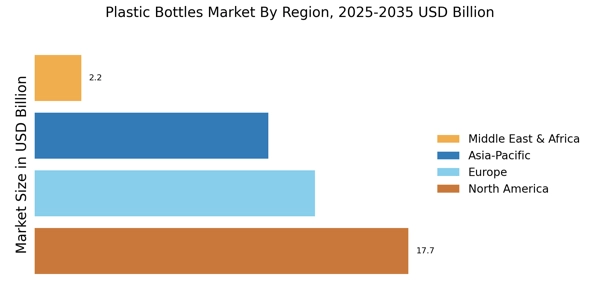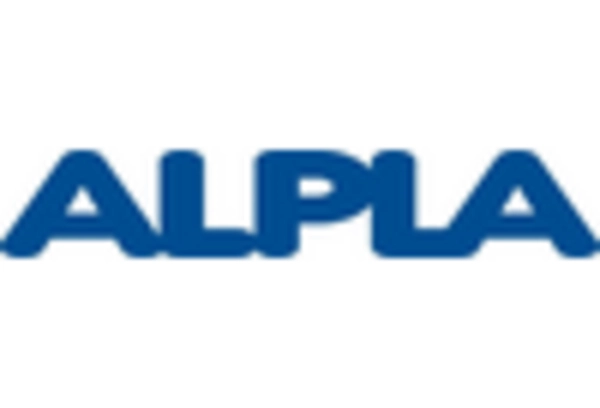E-commerce Growth
The rapid growth of e-commerce is a significant driver for the Plastic Bottles Market. As online shopping becomes increasingly prevalent, the demand for packaging solutions that ensure product safety and integrity during transit is on the rise. This trend is particularly evident in the beverage sector, where companies are seeking durable and lightweight packaging options to minimize shipping costs and enhance customer satisfaction. Recent statistics indicate that e-commerce sales in the beverage industry have surged, leading to a corresponding increase in the demand for plastic bottles. Furthermore, the convenience of online shopping has led to a shift in consumer purchasing behavior, with more individuals opting for home delivery of bottled products. Consequently, the Plastic Bottles Market is poised to benefit from this e-commerce boom, as companies adapt their packaging strategies to meet the needs of online consumers.
Regulatory Compliance
Regulatory compliance is an essential driver for the Plastic Bottles Market. Governments worldwide are implementing stringent regulations aimed at reducing plastic waste and promoting recycling. These regulations often mandate the use of recyclable materials in packaging, compelling manufacturers to innovate and adapt their production processes. For instance, the European Union has set ambitious targets for reducing single-use plastics, which has prompted companies to explore alternative materials and designs. Compliance with these regulations not only helps companies avoid penalties but also enhances their brand reputation among environmentally conscious consumers. As a result, the Plastic Bottles Market is likely to experience a shift towards more sustainable practices, driven by the need to adhere to evolving regulatory frameworks.
Sustainability Initiatives
The increasing emphasis on sustainability initiatives is a pivotal driver for the Plastic Bottles Market. As consumers become more environmentally conscious, there is a growing demand for eco-friendly packaging solutions. Companies are responding by adopting sustainable practices, such as using recycled materials and reducing plastic waste. In fact, the market for recycled PET bottles is projected to grow significantly, with estimates suggesting a compound annual growth rate of over 5% in the coming years. This shift not only aligns with consumer preferences but also helps companies meet regulatory requirements aimed at reducing plastic pollution. Consequently, the Plastic Bottles Market is witnessing a transformation as brands strive to enhance their sustainability profiles, thereby attracting a broader customer base.
Technological Advancements
Technological advancements play a crucial role in shaping the Plastic Bottles Market. Innovations in manufacturing processes, such as blow molding and injection molding, have led to increased efficiency and reduced production costs. Moreover, the introduction of smart packaging technologies, which incorporate sensors and QR codes, enhances consumer engagement and product traceability. These advancements are not merely incremental; they represent a paradigm shift in how plastic bottles are produced and utilized. For instance, the integration of automation in production lines has been shown to improve output quality and consistency. As a result, companies that leverage these technologies are likely to gain a competitive edge, further propelling the growth of the Plastic Bottles Market.
Changing Consumer Preferences
Changing consumer preferences are significantly influencing the Plastic Bottles Market. As health and wellness trends gain traction, consumers are increasingly opting for bottled beverages that align with their lifestyle choices. This shift is evident in the rising demand for bottled water and functional drinks, which has led to a notable increase in production volumes. According to recent data, the bottled water segment alone is expected to account for a substantial share of the market, with projections indicating a growth rate of approximately 6% annually. Additionally, consumers are gravitating towards brands that offer convenience and portability, further driving the need for innovative bottle designs. This evolving landscape compels manufacturers to adapt their offerings, ensuring they meet the diverse needs of modern consumers.


















Leave a Comment